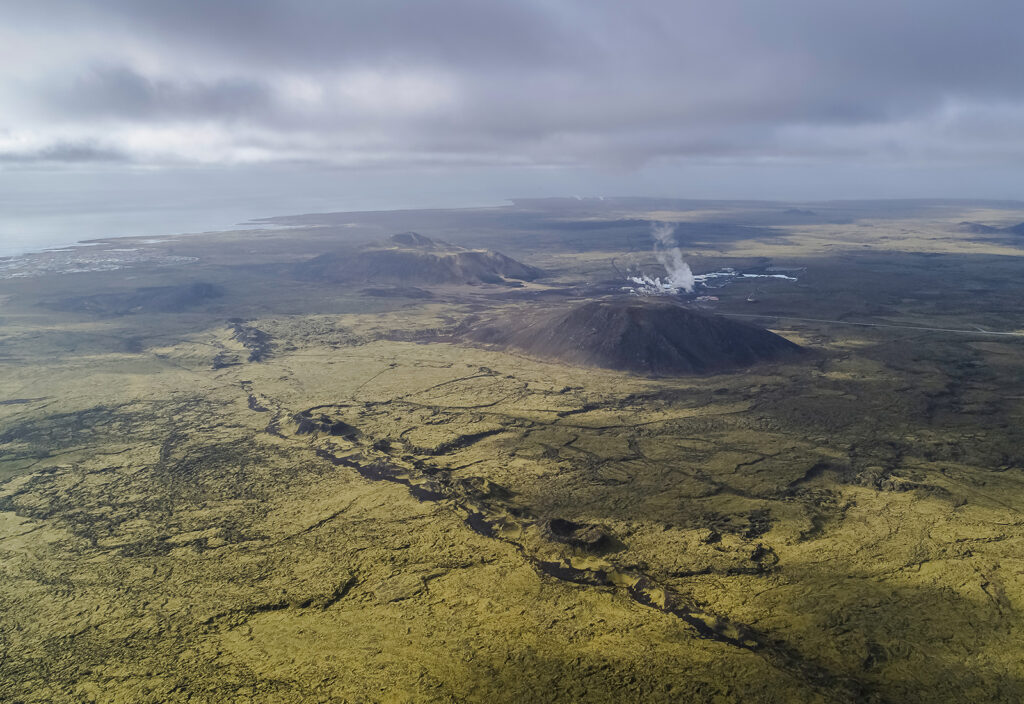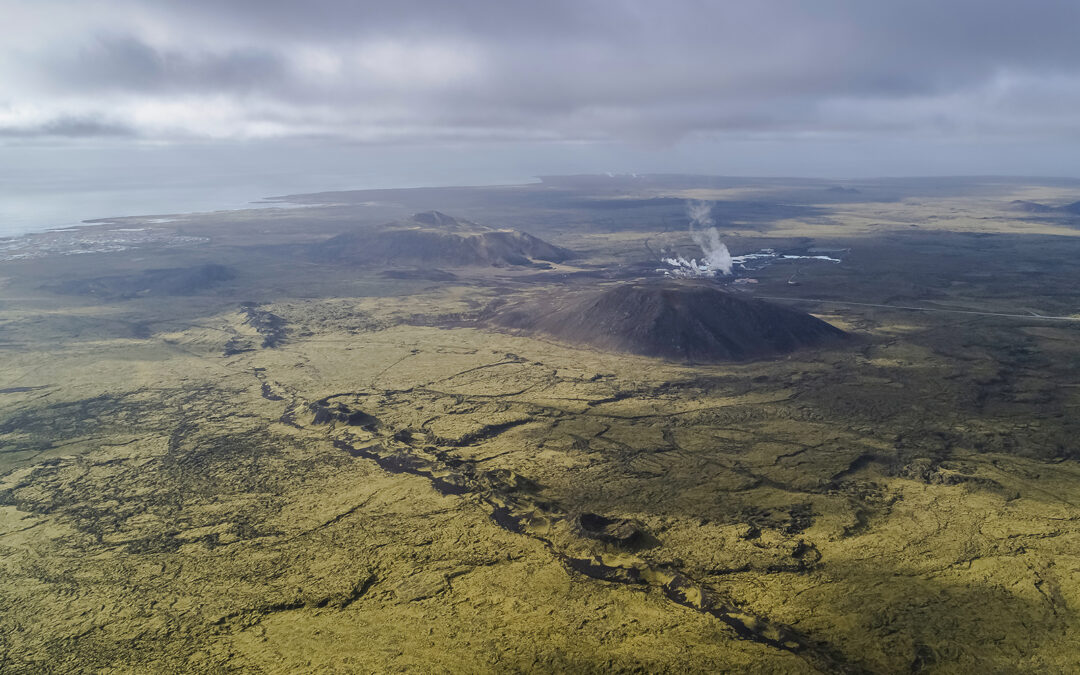Once again Iceland is making headlines, now because of an eruption near the town of Grindavík on the south-west coast of Iceland. The town was swiftly evactuated in November and earthquakes have damaged a portion of the town including the sports center. A small eruption occurred on Dec 18. a few km from the town which caused no havoc, however it started erupting again on Jan 14 with a small fissure opened just a few meters from the outskirts of the town and three houses were engulfed in lava. Thankfully, the eruption only lasted a day. The area is closely monitored and scientists will know a few hours before there is a potential eruption again, because all evidence suggest it might go off very soon again.
An eruption in that area would have be of a similar sort as the two “tourist eruptions” (that’s what we call them because they are safe at a distance and quite scenic) that we had at Fagradalsfjall, Geldingadalir and Litli-Hrútur in 2021-2023. An event like 2010 when Eyjafjallajökull erupted is considered a very slim chance because you need a vast amount of water (like a thick glacier) to produce the ash cloud that stalled the air traffic.
Iceland is a geologist heaven, probably one of the most researched and monitored places on the planet since the island sits on the Midatlantic-ridge with the North-American and the European plates going through it and pulling it in two different directions. It is estimated that Iceland grows about 2 cm (almost an inch) per year and North Iceland gets a fair share of that. Visiting Mývatn in North Iceland as well as Ásbyrgi is a an obligation for the geology enthusiasts.
It is because of the geothermal and volcanic activity that Iceland is habitable. We know that we cannot tame nature but we can observe, research, examine and we are constantly learning new things about the land, the earth, the crust. We know it will erupt again, and again, but we are not stressed about it and you shouldn’t either.
North Iceland is not in any way effected by these earthquakes or eruptions and here up north life is very normal. The days are getting longer and we are optimistic for the upcoming summer season.
Welcome to Iceland.

Photo: Jón Steinar Sæmundsson/Vikurfrettir

